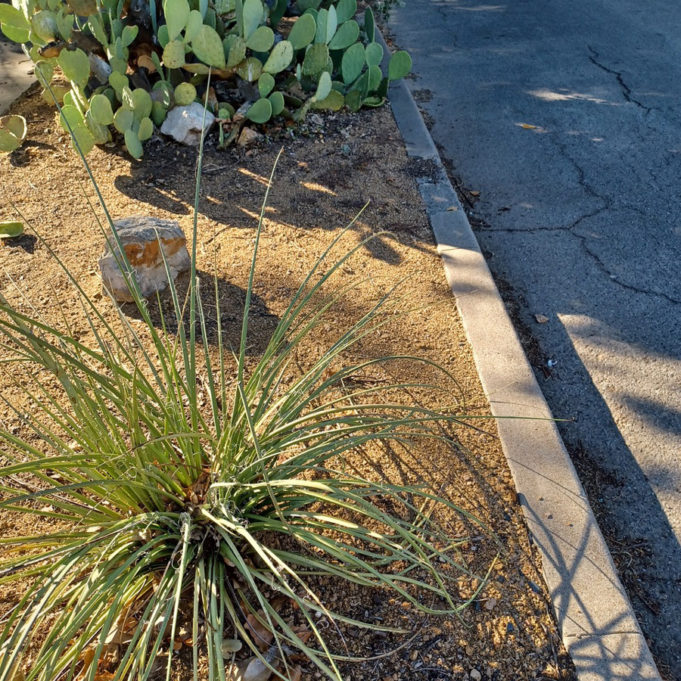The statement “Yes, it’s hot, but this could be one of the coolest summers of the rest of our lives” has been running like an endless loop through my mind lately. If it is even mostly true, what are we to do?
Like anyone on a hellaciously hot summer afternoon, I’d much rather think about anything than the climate emergency, yet our reality doesn’t talk. It swears. Outside, my grass is bleached yellow by our unforgiving Texas sun. Inside, my porch plants huddle together, refugees from yet another triple-digit, excessive-heat-warning day. If we were in a Looney Tunes cartoon, our dilemma would be illustrated with chickens turning on a rotisserie — to then be replaced by our prone bodies being roasted.
Around the world, deadly wildfires have caused untold damage while temperatures break new records every day. Here in Texas, as Jeff Goodell points out in his new book The Heat Will Kill You First, “every heatwave is a nail-bitter.” The air-conditioning we need to cool ourselves strains our unreliable grid. Then our death toll would sizably dwarf 2021’s Snowmageddon. It’s time we get serious about the climate emergency, no matter how uncomfortable it makes us.
I’ve been aware of xeriscaping for years. That’s where you replace your lawn with native plants, rocks, and pebbles so you’ll need to water your yard only very little or not at all. I have successfully resisted doing it because it was more cash, time, and energy than I wanted to expend, but now I really should do it.
Being comfortably retired, I’ve run out of excuses. I have both time and money, plus I need to do something. Fort Worth’s climate will only get dryer as the years go on. The Dallas Morning News says that between “2041 and 2050, Dallas-Fort Worth may see August [mean] temperatures rise … to 94 degrees, with extremes rising above 120.”
I’m 66 but still in decent enough shape to xeriscape by myself. I can start out small with a long narrow patch of yard on the side of my house. After a week, I could finish it. I have an electric tiller that could take up grass and weeds. I also have a weed barrier roll left over from another project. If I need more, I can always make a run to Lowe’s. Then I could put in the pebbles, rocks, and native plants.
After some well-deserved time off to give my aching back a rest, I could do another chunk of my front yard that’s grass. If I work a few hours most days, I could knock it out in two weeks max, so in about three weeks, I could xeriscape most of my front yard, saving myself both money and the time I’d have spent watering.
Big fucking deal, you could rightly say, and I’d agree. While it’s “nice” of me to do what I should have done years ago, it’s not enough. What about all those who cannot xeriscape their yards because of money, time, or ill health? And what about businesses and schools with large campuses and traditional grass lawns? How can we get them to change? Beyond that, I recognize that xeriscaping is just a tiny slice of what’s needed.
Clearly, our present state and local governments are ill-equipped to handle the climate emergency. Our state is too in-bed with fossil fuel corporations, and our city government hasn’t yet truly reckoned with this crisis’ seriousness. As a country, politically, we’re still trying to decide if it’s cost effective to save our planet.
In the near future, Fort Worth will not only be where the West begins, it will be, as far as climate goes, a West Texas town. Think: Lubbock or Amarillo. Green grass lawns will make even less sense than they do now. Local government will have to use carrots and, yes, sticks to get most of us to change our long-standing addiction to green lawns.
We all know there will be pushback by those who call anything they don’t like “woke,” but after this summer — and after NASA announced that July was the hottest month in recorded history and after the record-breaking temps most of us have experienced up close and personal — can there be any doubt that the time for doing nothing is over?
This column reflects the opinions and fact-gathering of the author and not the Fort Worth Weekly. To submit a column, please email Editor Anthony Mariani at Anthony@FWWeekly.com. He will gently edit it for clarity and concision.













Xeroscape works great in desert or high desert (NM for example) but has to be handled with care here because this is more of a mid western type environment. I would suggest using native plants (beautyberry ) for example and native grasses where appropriate.